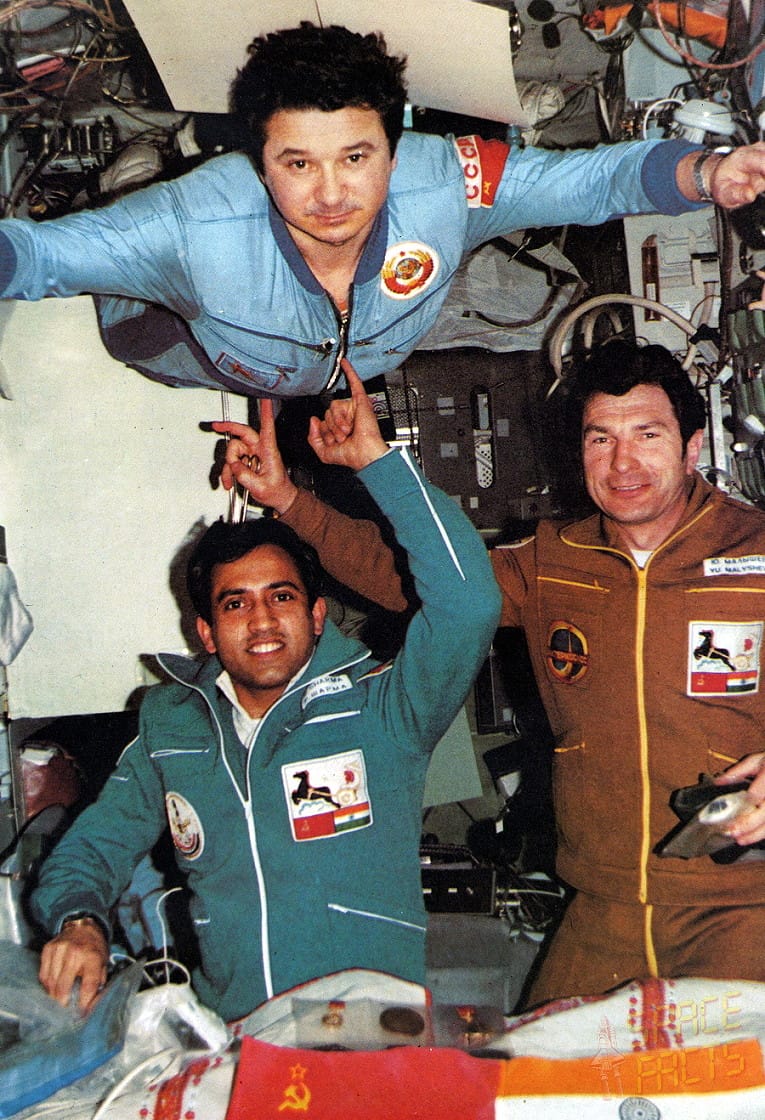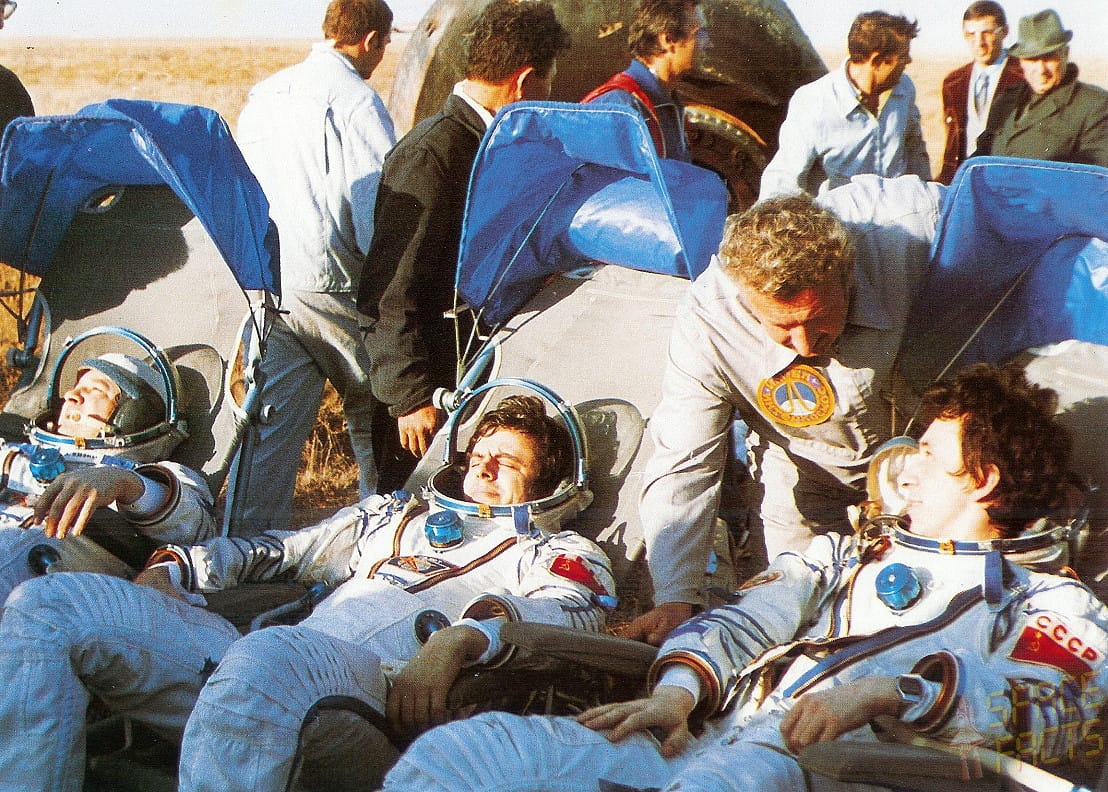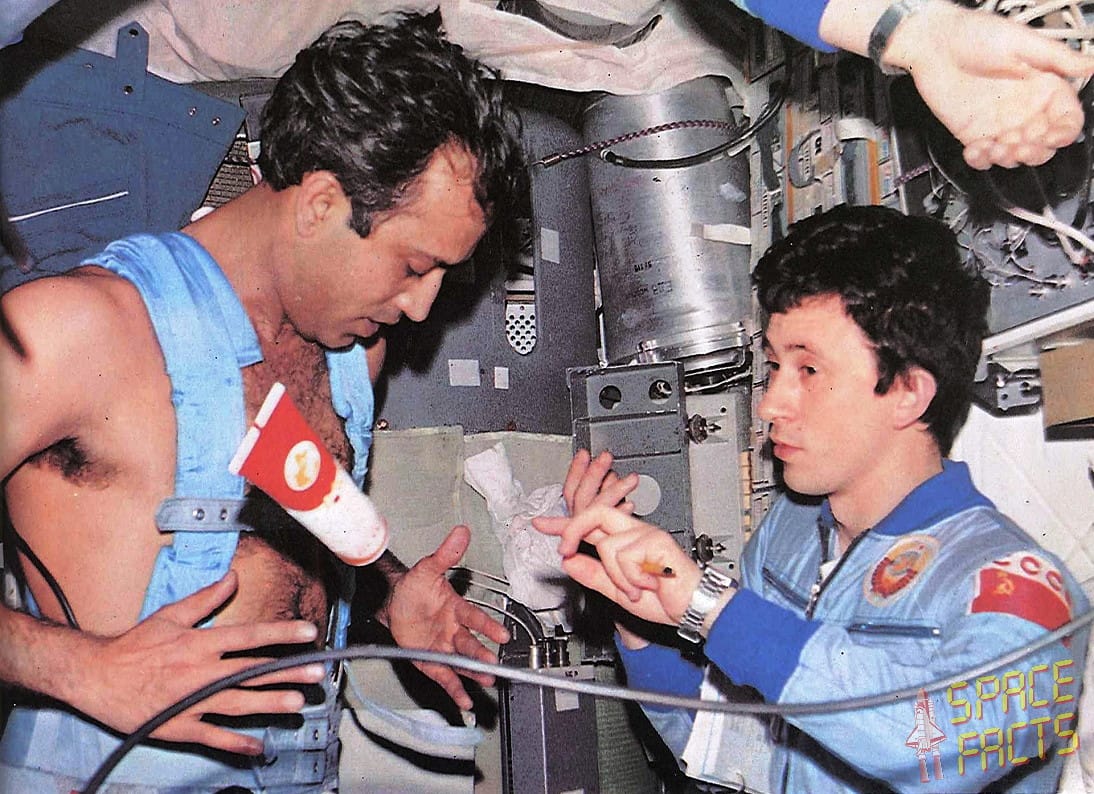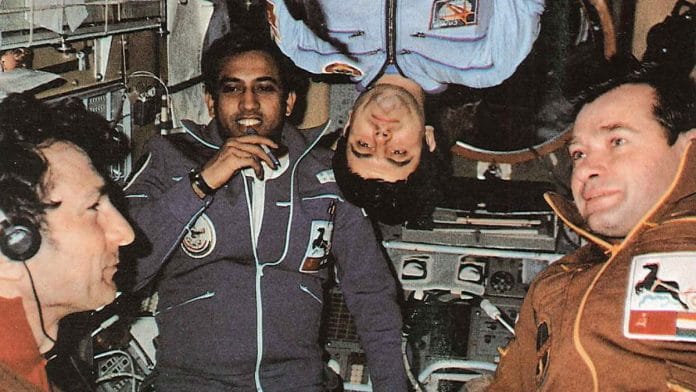New Delhi: The countdown has begun. IAF group captain Shubhanshu Shukla will blast off on 10 June into space on the Axiom 4 Mission. In Bengaluru, rooting for him is the first Indian to go to space on a Soviet mission 41 years ago—Indian Air Force Wing Commander (retd.) Rakesh Sharma.
In 1984, Rakesh Sharma peeped out of Salyut-7, a second-generation Soviet space station, and looked at his home country in awe. Wearing the Tricolour on his arm, he said, “Saare jahan se accha” when asked how his motherland looked from space.
On 2 April that year, Rakesh Sharma became the first Indian to blast off into space on board the Russian Soyuz T-11 rocket. For over four decades, he has exclusively held the title of the only Indian to go to space.
“I am in touch with Shubhanshu. He knows my wishes are with him,” Rakesh Sharma told ThePrint, expressing his eagerness to pass the torch. “My mission has been spoken about for 41 years. I am grateful for that love and attention, but this is his (Shukla’s) moment, and I want all the attention to be on him.”
Shubhanshu Shukla has said he will carry a “surprise gift” to space to honour Rakesh Sharma.
The mission that took India to space
When Rakesh Sharma flew to the Soviet space station—Salyut-7—he was only 35.
In 1982, when India and the Soviet Union agreed to send an Indian to space under their Intercosmos Programme, Rakesh Sharma was a test pilot with the IAF, which automatically qualified him as a possible applicant. However, he underwent several training rounds and beat over 150 candidates before his selection.

The rigorous training continued for over two years. Rakesh Sharma had to endure high G-forces or gravitational force equivalent, sensory deprivation tests, and cardiovascular and vestibular stress simulations.
The final flight, beyond the Earth’s limits into the vast space, was worth it all, Rakesh Sharma said.
“When you look at Earth from space, it seems like the borders between countries become a blur,” Rakesh Sharma said during the Global Space Exploration Conference, an international space conference organised in Delhi last month.
Rakesh Sharma spent seven days, 21 hours, and 40 minutes in space—a record that 39-year-old Shubhanshu Shukla will break with his 14-day space mission.
Shubhanshu Shukla will then become the first Indian to travel to the International Space Station, as opposed to Rakesh Sharma’s Salyut-7 visit.
“Now no longer operational, Salyut-7 had two docking ports, one on either end of the station, to allow docking with the Progress unmanned resupply craft—an expendable unmanned cargo spacecraft developed by the Russian space agency, Roscosmos—and a wider front docking port to allow safer docking with a heavy cosmos module,” a NASA document read.

Shubhanshu Shukla will undertake his mission with the help of technology, which has advanced significantly since Sharma’s time.
Led by the US-based space company Axiom Space, the Axiom 4 Mission will fly in Elon Musk’s SpaceX capsule—the brand new Crew Dragon C213, which is set for its first flight too. The capsule will fit on top of the Falcon 9 rocket.
Also Read: India Space Congress shows the need to bridge gender gap—ISRO must stand up, men must sit down
Muscle regeneration to space farming
Seventy-six-year-old Rakesh Sharma’s space travel was a historical moment in the Indian space programme. However, he also returned with insights, valuable data, and observations from various fields of science.
Some key areas that Rakesh Sharma studied are space medicine and the impact of microgravity on physiology. He became the first person in the world to perform Yoga in space, which gave key insights into how each muscle reacted to exercises in space.

Shubhanshu Shukla will follow suit.
The Indian astronaut will lead experiments to study subjects, ranging from muscle regeneration to space farming and the growth patterns of microalgae. At least seven Indian science research institutes have designed these experiments.
With nearly 60 scientific studies and activities representing 31 countries, including the US, India, Poland, Hungary, Saudi Arabia, Brazil, Nigeria, UAE, and nations across Europe, the mission boasts the most research- and science-related activities to ever happen on an Axiom Space mission aboard the International Space Station (ISS) to date. Reflecting on this underscores the global significance and collaborative nature mission to advance microgravity research in low-Earth orbit.
Mission commander Peggy Whitson of the US, Poland-based mission specialist Sławosz Uznański-Wiśniewski, and mission specialist Tibor Kapu of Hungary will accompany Shukla. Shukla’s colleague, Prashant B. Nair, is the backup crew for the mission.
The Axiom 4 missions will take flight on Tuesday at 5.52 pm. The launch will take place from the NASA Kennedy Space Centre in Florida.
(Edited by Madhurita Goswami)
Also Read: ISRO commercial arm invites private players to build LVM3 rocket that delivered Chandrayaan mission






